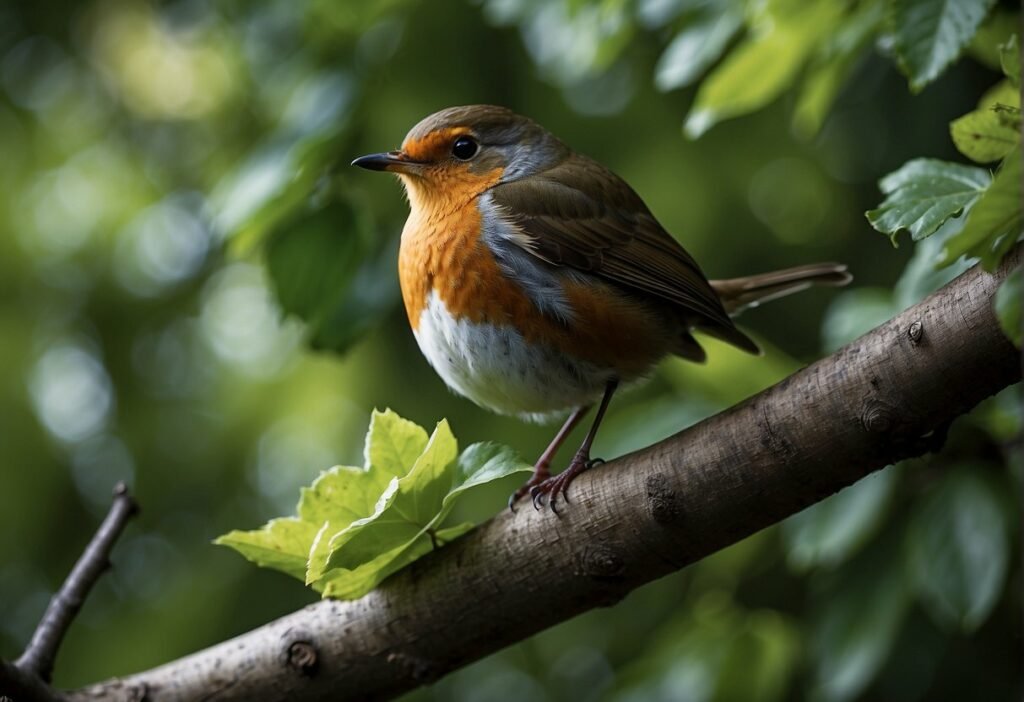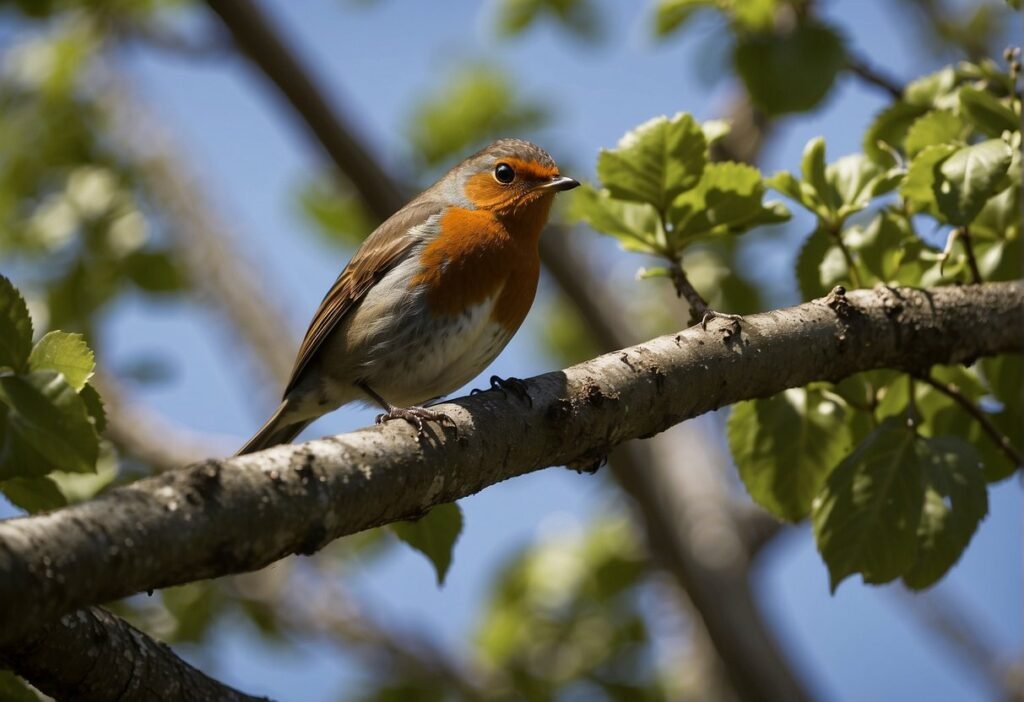Robins are a common sight in many parts of North America, known for their distinctive orange breast and cheerful song. However, like all living creatures, they are not immune to disease. In fact, there are several diseases that can affect robins, which can have serious consequences for both individual birds and populations as a whole.

One of the most well-known diseases that affects robins is avian pox. This virus is spread through biting insects, and can cause painful, wart-like growths on a bird’s feet, beak, and eyes. While avian pox is rarely fatal, it can make it difficult for a bird to eat, see, or move around, which can make it vulnerable to predators or other dangers. Other diseases that can affect robins include West Nile virus, which is spread by mosquitoes and can cause neurological damage, and avian influenza, which can cause respiratory problems and can be fatal in some cases.
Common Diseases and Health Concerns
Robins are susceptible to a variety of diseases and health concerns that can impact their survival and breeding success. Some of the most common diseases and health concerns that affect robins are discussed below.
Parasitic Infections
Parasitic infections are a major health concern for robins. These infections can cause a range of symptoms, including weight loss, lethargy, and respiratory distress. Worms, in particular, can cause serious health problems for robins. They can lead to intestinal blockages, which can be fatal if left untreated.
Viral and Bacterial Diseases
Robins are also susceptible to a variety of viral and bacterial diseases, including bird flu (avian influenza) and West Nile virus. These diseases can cause respiratory distress, fever, and other symptoms. In severe cases, they can lead to death.
Physical and Developmental Disorders
Physical and developmental disorders can also impact the health of robins. Pierre Robin sequence and cleft palate are rare conditions that can affect the development of the upper airway and jaw. These conditions can make it difficult for robins to breathe and eat, which can impact their survival and breeding success.
Regular physical exams can help detect these and other health concerns in robins. It is important to monitor robins for signs of illness, such as changes in behavior or appearance, and seek veterinary care if necessary. By taking steps to prevent and treat diseases and health concerns, it is possible to help protect the health of robins and ensure their survival in the wild.
Environmental and Human-Induced Threats
Robins face a variety of environmental and human-induced threats that can impact their health and survival. Understanding these threats is crucial to protecting these birds and their habitats.
Habitat Loss and Climate Change
Habitat loss is a major threat to robins, as it can limit their ability to find suitable nesting areas and food sources. Climate change is also a concern, as it can alter the timing of migration and nesting, and affect the availability of food and water.
Urban Hazards and Predation
Urbanization can pose significant threats to robins, as they are often exposed to hazards such as windows and collisions with vehicles. Predation by domestic cats and other animals can also be a problem, particularly in urban areas where natural predators may be scarce.
Chemical Exposure and Poisoning
Robins can be exposed to harmful chemicals and pesticides through contaminated food sources, such as berries and fruits. Farms and other agricultural areas may also use pesticides that can be harmful to robins and other wildlife. Wildlife experts recommend avoiding the use of pesticides and other chemicals whenever possible to protect these birds and their habitats.
Overall, it is important to take steps to protect robins and their habitats from these and other threats. By working together to address these challenges, we can help ensure that these beautiful birds continue to thrive in North America and beyond.
Frequently Asked Questions
What are common illnesses found in wild robins?
Wild robins can be affected by a variety of diseases, including avian pox, salmonellosis, and West Nile virus. Avian pox is a viral disease that causes wart-like growths on the bird’s body, while salmonellosis is a bacterial infection that can cause diarrhea, dehydration, and death. West Nile virus is a mosquito-borne disease that can cause neurological symptoms in birds.
How can humans be affected by diseases carried by robins?
Humans can become infected with diseases carried by robins through contact with contaminated bird droppings or by handling sick or dead birds. Salmonellosis, for example, can be transmitted to humans through contact with bird feces or contaminated surfaces. It is important to take precautions when handling wild birds to avoid exposure to potentially harmful pathogens.
What symptoms indicate a robin might be diseased?
Symptoms of disease in robins can vary depending on the specific illness. Some common signs of illness in birds include lethargy, loss of appetite, difficulty breathing, and changes in behavior. Birds that appear weak or disoriented may also be sick. It is important to contact a wildlife rehabilitator or veterinarian if you suspect a bird is ill.
Can domestic dogs contract diseases from wild birds like robins?
Yes, domestic dogs can contract diseases from wild birds like robins. Dogs that come into contact with bird droppings or infected birds can become sick with diseases like salmonellosis or West Nile virus. It is important to keep dogs on a leash and away from sick or dead birds to prevent exposure to potentially harmful pathogens.
What is the most prevalent disease found in bird populations?
One of the most prevalent diseases found in bird populations is avian influenza, also known as bird flu. This viral disease can cause respiratory symptoms and can be fatal in some cases. It is important to monitor bird populations for signs of avian influenza and to take precautions to prevent the spread of the disease.
How do bacterial infections transmit from birds to humans?
Bacterial infections can transmit from birds to humans through contact with contaminated bird droppings or surfaces. Salmonellosis, for example, can be transmitted to humans through contact with bird feces or contaminated surfaces. It is important to take precautions when handling wild birds to avoid exposure to potentially harmful pathogens.




